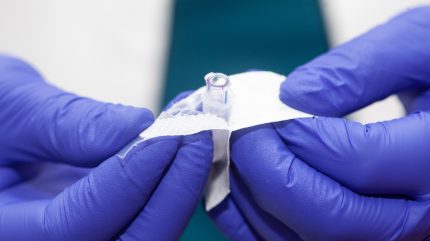
Tiny technologies are quietly reshaping the packaging world. Micropackaging and nanotechnology applications are opening new frontiers in how products are protected, preserved, and delivered across industries.
By manipulating materials at micro and nano scales, packaging designers and manufacturers are developing solutions that not only extend shelf life but also reduce environmental impact, improve safety, and support smarter supply chains.
As consumer expectations for quality and sustainability continue to rise, these advances in micro and nano packaging are driving innovation that keeps brands competitive in a changing market.
Enhancing barrier properties and shelf life
One of the most promising uses of micropackaging and nanotechnology is the ability to significantly improve barrier properties in packaging materials.
Nano-sized additives such as nanoclays, nanocellulose, or silica nanoparticles can be incorporated into films or coatings to dramatically reduce the permeability of oxygen, moisture, and other gases.
By lowering transmission rates, these advanced materials extend the shelf life of perishable goods like fresh produce, dairy, and ready meals—helping reduce food waste across the supply chain.
A study published in Trends in Food Science & Technology highlighted that nanocomposite films can lower oxygen permeability by up to 90% compared with conventional plastic packaging.
For retailers, this translates to longer-lasting products on the shelves, fewer returns, and improved customer satisfaction. Meanwhile, for consumers, it means fresher food for longer, supporting the global push towards more sustainable consumption.
Improving product safety and integrity
Micropackaging and nanotechnology applications also play a crucial role in improving safety and integrity across packaged goods. Antimicrobial nanomaterials, such as silver nanoparticles or zinc oxide, can be embedded in packaging layers to inhibit bacterial or fungal growth.
This innovation is particularly relevant in food and pharmaceutical packaging, where controlling microbial contamination is essential to preventing spoilage and ensuring consumer health.
Another important safety aspect involves tamper-evident features made possible through nano-scale markers or micropatterns. These invisible or microscopic codes can be printed or etched onto packaging surfaces, creating a unique fingerprint that is difficult to replicate.
By scanning these nano-markers with specialised readers or smartphone apps, manufacturers and retailers can verify product authenticity and detect counterfeits, protecting both brands and consumers from fraud.
Such technologies are increasingly adopted in sensitive sectors like pharmaceuticals, luxury goods, and electronics. They allow for secure tracking along supply chains and provide end-users with confidence that the product they are purchasing is genuine and unaltered.
Enabling intelligent and sustainable packaging solutions
Micropackaging and nanotechnology are at the forefront of intelligent packaging developments that add new layers of functionality beyond traditional containment.
For instance, nanosensors integrated into packaging films can monitor changes in temperature, humidity, or gas composition inside a pack.
This data can trigger colour-changing indicators that show consumers or logistics providers if a product has been exposed to conditions that could compromise quality—such as a break in the cold chain for chilled foods.
These smart indicators reduce waste by preventing the unnecessary disposal of perfectly safe products, while also avoiding the consumption of spoiled items. Such applications align with growing efforts to promote circular economy principles and cut down on food and packaging waste.
On the sustainability front, nanotechnology enables the design of lighter and stronger packaging materials. By strengthening films at the molecular level, companies can use thinner layers without compromising durability or barrier performance, reducing raw material consumption.
Moreover, biopolymer-based nanocomposites, such as polylactic acid (PLA) reinforced with nanocellulose, offer compostable and biodegradable alternatives to traditional plastics—addressing mounting concerns over plastic pollution.
A future shaped by micro and nano innovations
The combined benefits of micropackaging and nanotechnology applications—longer shelf life, enhanced safety, smart monitoring, and reduced environmental footprint—are transforming packaging from a passive container into an active, intelligent tool that supports efficiency and sustainability.
As research advances and commercial-scale production becomes more cost-effective, micro and nano solutions are expected to become standard in packaging for food, beverages, pharmaceuticals, electronics, and beyond.
Industry experts predict growing investment in nanotechnology for packaging, spurred by consumer demand for fresh, safe, and environmentally friendly products.
Companies across the value chain are collaborating with research institutions to develop novel materials that meet regulatory standards and offer reliable performance in real-world conditions.
Micropackaging and nanotechnology applications are no longer the stuff of science fiction; they are tangible innovations reshaping how products reach consumers.
By leveraging the potential of these cutting-edge technologies, the packaging industry can unlock unprecedented opportunities to improve performance, ensure safety, and minimise waste—delivering long-lasting benefits for businesses, consumers, and the planet alike.







